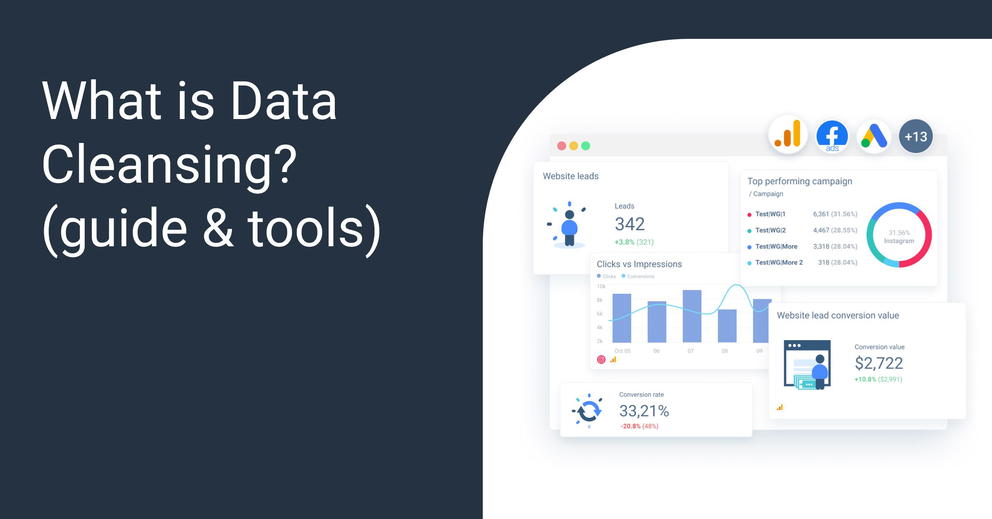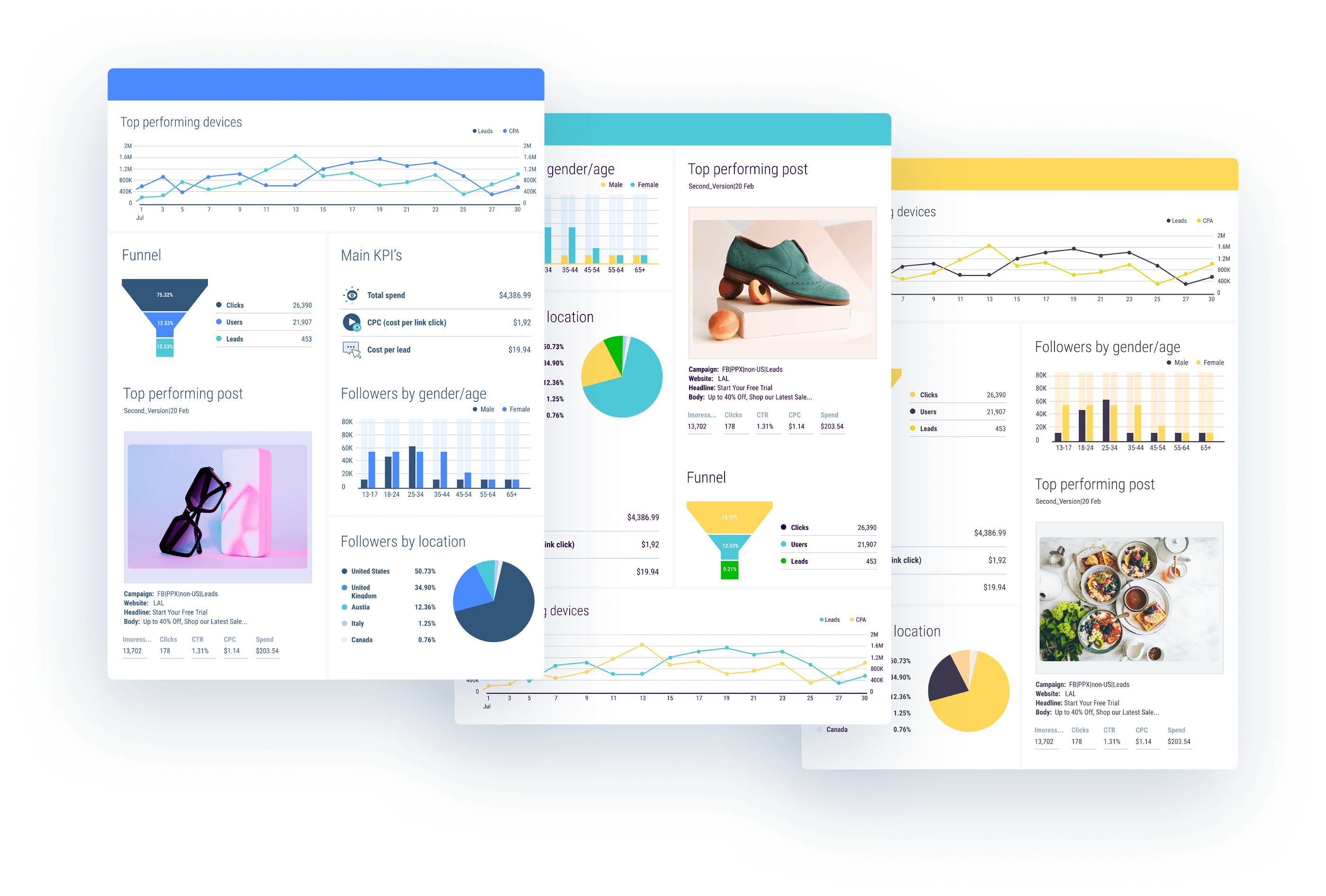What is Data Cleansing & what steps you should take to clean your data?
The only way for data to be truly useful is if we can analyze it and create meaningful insights or inputs. At the same time, the quality of those insights directly corresponds to the quality of data we used in the analysis. In other words, the source data needs to be processed or cleansed before we can conduct an accurate analysis.

Apr 09 2021 ● 6 min read

Data cleaning, or data cleansing, also referred to in some cases as data scrubbing, is an important segment of the information analysis process. Here we will take a deep dive into data cleaning, explaining exactly what it is, how it's done, and also mention some of the data cleansing tools.
What is Data Cleansing?
Data cleansing or data cleaning is the process of identifying corrupt, incorrect, duplicate, incomplete, and wrongly formatted data within a data set and removing it. This data cleaning process is rather necessary because the information needs to be analyzed from different data sources. In other words, there will be different formats, irrelevant inputs or outcomes, information will overlap, and so on.
In order for data analysis to be successful or accurate, there needs to be a unified format or template. Because these templates, formats, or algorithms that someone is using vary, the data cleansing process itself will vary as well. The approach or the data cleansing techniques someone is using will depend on the template.
Data Cleansing vs. Data Transformation
The data cleansing process can sometimes be mistaken for data transformation. This is because data transformation or data wrangling implies converting data from one format into another so that it can also fit into a specific template. The difference is that data wrangling does not remove data that does not belong to the desired dataset, whereas data scrubbing does.
Data Cleaning Process
Even though we mentioned that the data scrubbing process or data cleaning tool varies depending on the desired format or template, there are some basic steps that are pretty universal throughout the process.
- Data Deduplication and removal of irrelevant information
Step 1 of data cleaning is almost always removing duplicate or irrelevant items. Throughout data collection, it is quite common to obtain duplicate and/or irrelevant observations. This happens because we acquire information from multiple data sources or because we are combining multiple data sets.
When we are trying to analyze a specific problem or simply come up with the most impactful solution, we are going to encounter data that is related to the problem but not exactly relevant. To that end, we need to isolate those instances and observations and remove them.
An example of this would be analyzing the millennial customer base and their behavior, but the data we received also pertains to older customers. So a portion of those observations is irrelevant and warrants removal.
- Filtering Undesired Outliers
Outliers are data points that significantly deviate from other observations. This can occur due to different variables, or it can also indicate errors. In your cleansing process, you will have to ascertain if that outlier should stick around or if it needs to be removed in order to improve the performance of the data you are using.
In other words, the existence of an outlier does not necessarily indicate it is incorrect. Often it can carry increments of knowledge or inputs that could be used. So it's really important to determine the relevance of the outlier prior to deciding on whether to remove it or not.
- Fixing Structural Errors
Structural errors pertain to naming conventions, syntax errors, typos, or out-of-place capitalizations. They are regarded as mistakes because they do not follow the prescribed template. One use case would be using "N/A" or a number "0" but instead getting data sets that use "Not Applicable" when presenting the same occurrence.
So, in those instances, you would have to make adjustments so that accurate data processing is enabled. Otherwise, the algorithms you are using will most likely report an error.
- Problems With Missing Data
When entering data into the template, it can happen that some fields are simply missing. This can be a problem since certain algorithms cannot accept missing values. Considering how batch processing requires you to populate all of the fields, you will need to address these problems.
One solution is to make those inputs based on your observations. However, this might cause your new database to lose a portion of its integrity. Another option is to omit the observation that is incomplete, but once again, the accuracy of your results will be lost. The final option is to alter the template or the way the data is used to accommodate those null values.
- Validation and Quality Assurance
After the data cleansing process is over, you need to validate whether data cleaning tools have done their job correctly. You need to examine if the newly obtained dataset makes sense and if the fields were populated correctly. Try to determine if the results prove or disprove the theory you are working on or if they are revealing some new insights.
It is also possible to find trends in data that will serve as a basis for a new theory. Finally, if you cannot validate your data based on these points, it may indicate there are some data quality issues.
False or "dirty" data can lead to flawed analysis and incorrect conclusions, which can reflect poorly on your business strategy, organization, project scope, marketing efforts, or customer information. Reliable business intelligence depends on the quality of data, so let's see what some general components of quality data are.
Checking Data Quality
Once you are looking at clean data, you need to ascertain its quality. You do this by checking its:
- Validity - To which extent the information fits into defined business rules
- Accuracy - Are values within the database in a normal range
- Consistency - Is data consistent across multiple data entry fields and data sets
- Completeness - Are all necessary data entry fields populated
- Uniformity - Is depicted data specified using the prescribed measurement units
Benefits of Data Scrubbing
There are multiple benefits to having clean data. Generally speaking, it can help a company improve their services, generate more value out of their team, and a lot more. Overall it really helps any organization during the decision-making process.
Through data cleansing, you remove errors that occur when compiling information from multiple data sources. This makes both clients and employees happier as it reduces the frustration people have to deal with when these mistakes occur. You can also map different functions a lot easier and ascertain what causes errors to occur.
Benefits of Using Data Cleansing Tools
Improving data quality is a lot easier and more streamlined when you are using data cleansing tools. For started tools that are on Whatagraph help organizations better visualize their data or records and organize it in a template that fits their company needs. These solutions can help you better organize your files and perform more accurate analyses. You can even white-label the reports when you need to send them to a superior's email address.

FAQ
What are data cleaning techniques?
- Removing irrelevant or duplicate values
- Fixing structural errors
- Cleansing of undesired outliers
- Taking care of missing values
What is data cleaning in data analysis?
Data cleansing in data analysis means removing irrelevant, corrupt, duplicate, or incorrectly formated information, in order to generate clean data or quality data within a dataset. Higher data quality allows for more accurate analysis. Otherwise, algorithms can not provide reliable outcomes, and the overall value of the analysis decreases.
What is data cleaning in research?
Removing or filtering incorrect or inconsistent information from research records in order to prevent false conclusions on a certain research topic.
Which example qualifies as cleaning data?
For example, if you want to study the behavior of a particular age group of customers and remove data that is related to users who belong to different age groups. This can help a business form better marketing for their services if they want to reach a specific demographic.
Published on Apr 09 2021

WRITTEN BY
Indrė Jankutė-CarmaciuIndrė is a copywriter at Whatagraph with extensive experience in search engine optimization and public relations. She holds a degree in International Relations, while her professional background includes different marketing and advertising niches. She manages to merge marketing strategy and public speaking while educating readers on how to automate their businesses.